Abstract
We have investigated in vivo and in vitro parameters of cellular immunity in ten patients with cartilage hair hypoplasia, CHH. All ten patients displayed a negative skin test to 1 Tu tuberculin, eight patients did not respond to 10 Tu and seven not even to 100 Tu. Six patients were skin test-negative to 1:50 oidiomycin; and three were negative to even 1:10 oidiomycin. The absolute and relative distribution of blood T lymphocytes was normal. The absolute distribution of blood B lymphocytes was slightly decreased in three patients, but all patients had normal levels of IgM, IgG and IgA. Major changes were observed in the proliferative responses of blood leucocytes to mitogens and antigens. Five patients responded suboptimally to phytohaemagglutinin (PHA), two to concanavalin A, three patients were hyporesponsive to Staphylococcus aureus strain Cowan I bacteria, six to tuberculin (PPD) and six to oidiomycin. The in vitro responses of two patients were entirely normal. Except for three patients responding suboptimally to PPD or oidiomycin only, the reduced responses were all confined to the five patients responding suboptimally to PHA. The suboptimally responding patients displayed normal dose–response profiles to both PHA and Con A.
The in vitro hyporeactivity was a persistent phenomenon, as the pattern of PHA and Con A reactivity was essentially similar when the same patients had been tested to the same mitogens 5 years earlier. Except for the skin test hyporeactivity, none of these patients displayed any detectable clinical handicap, suggesting that the Finnish variant of the syndrome is dissimilar from the Amish variant, where the in vitro deficiency to mitogens and antigens is related to susceptibility to severe and often fatal infections, especially to varicella and vaccinia.
Full text
PDF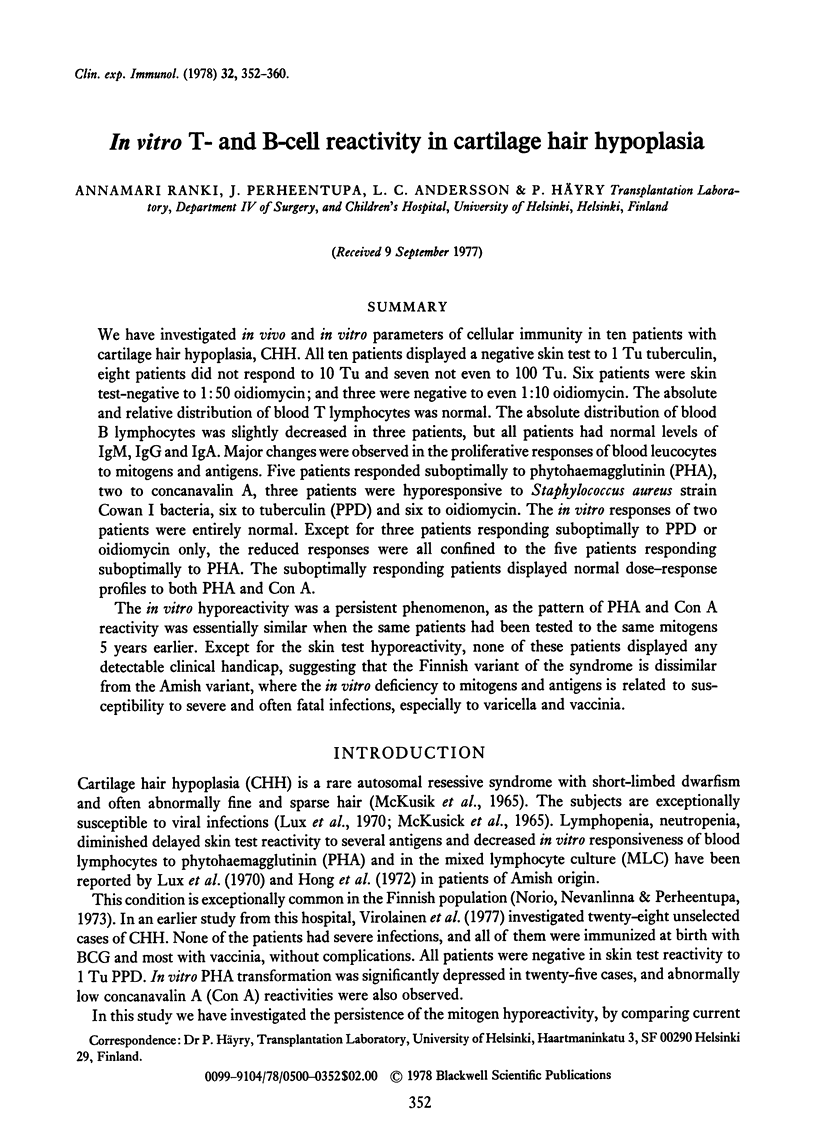
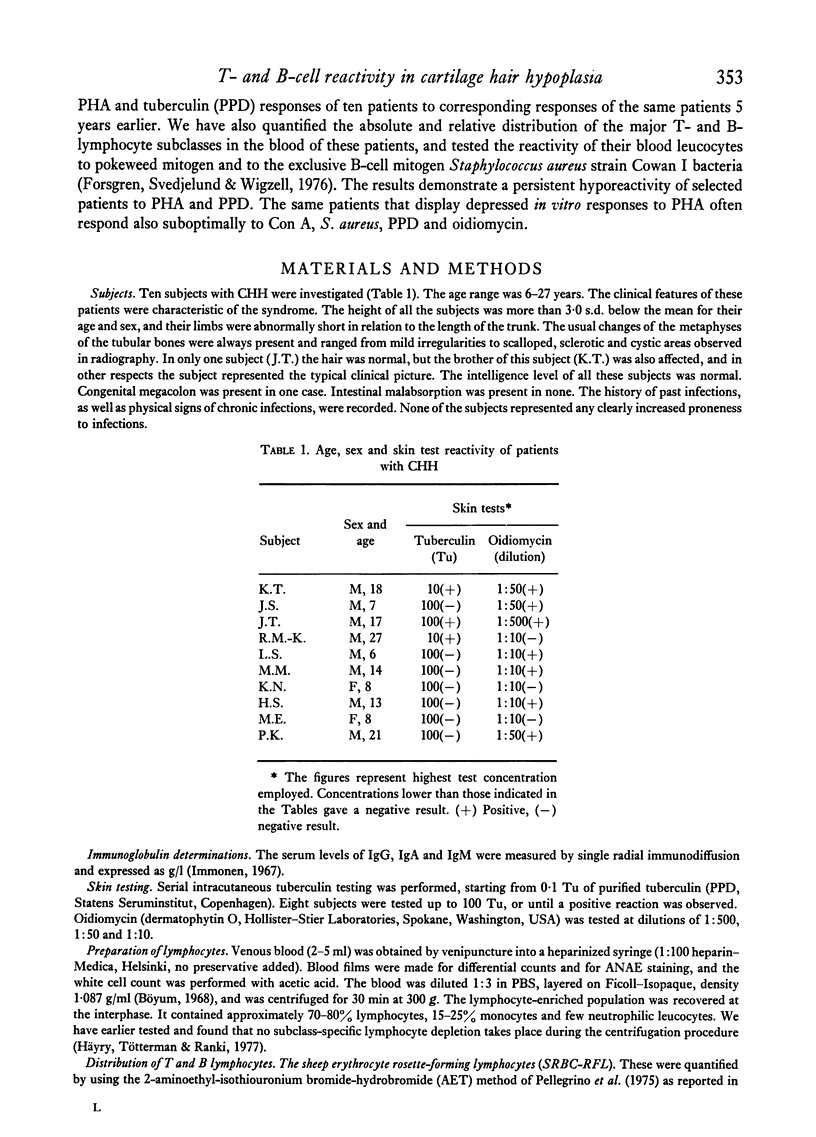
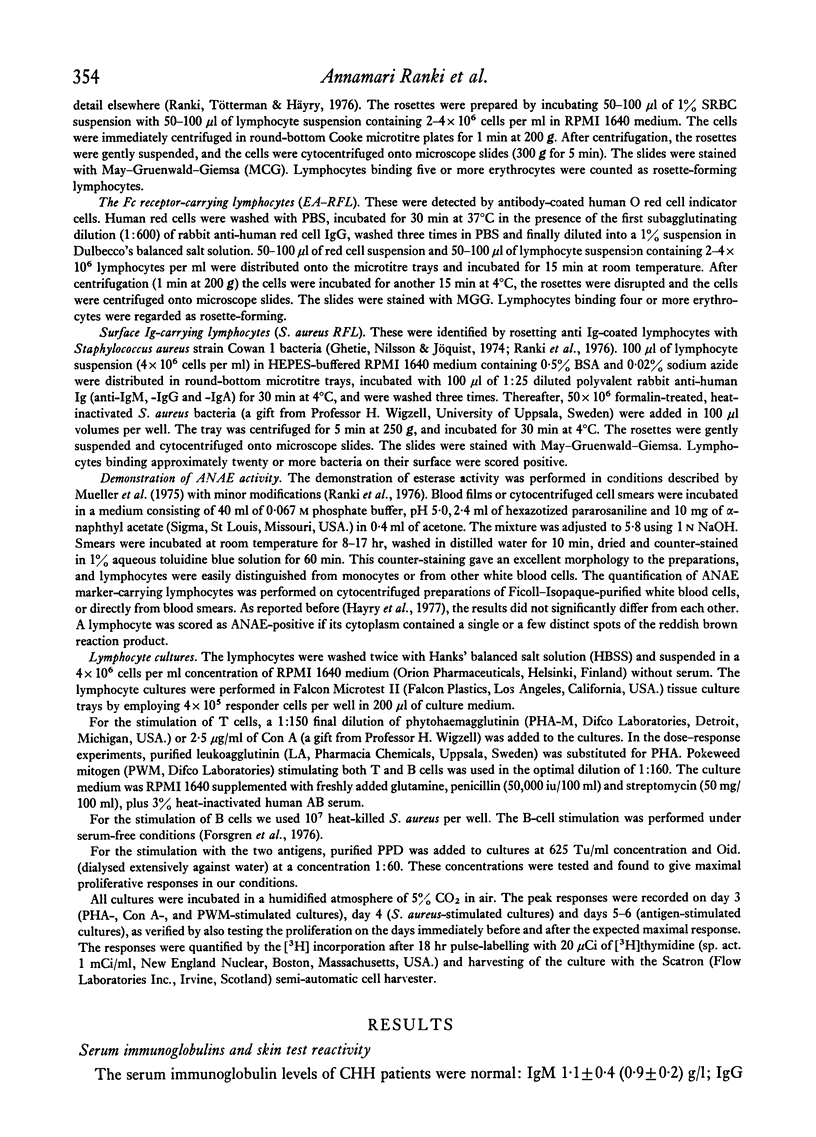
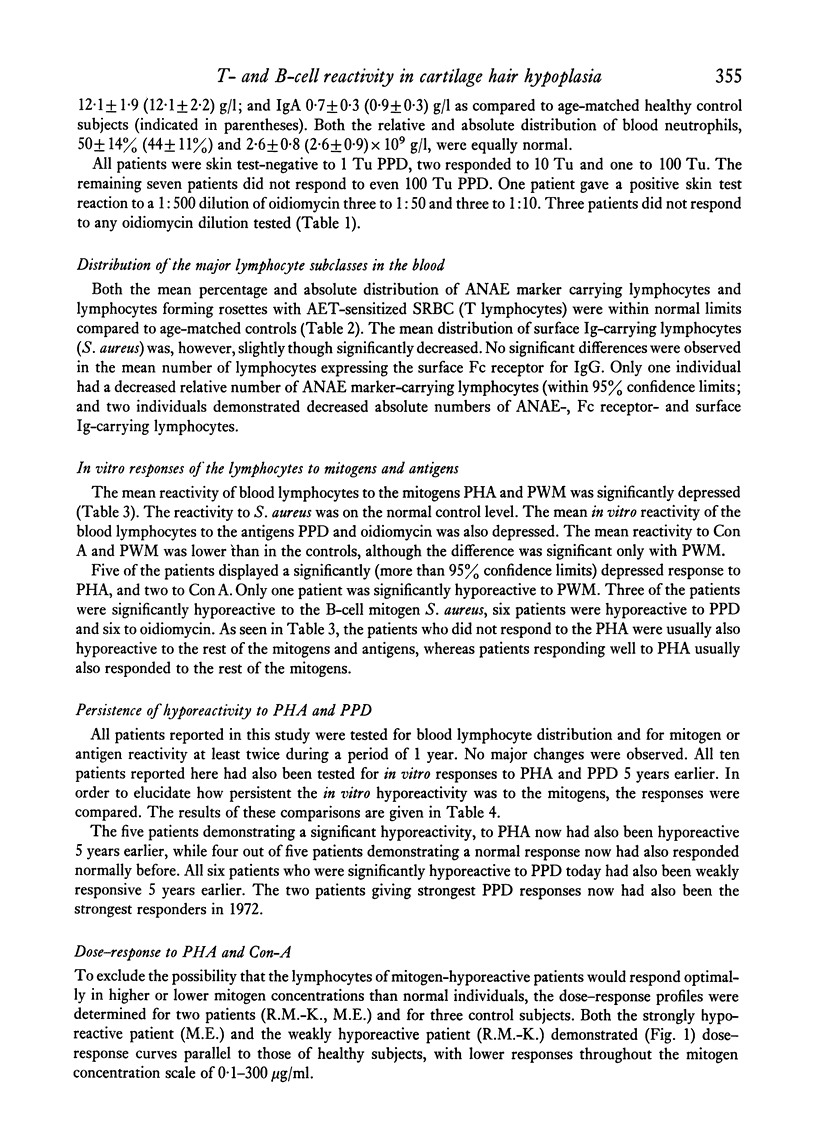
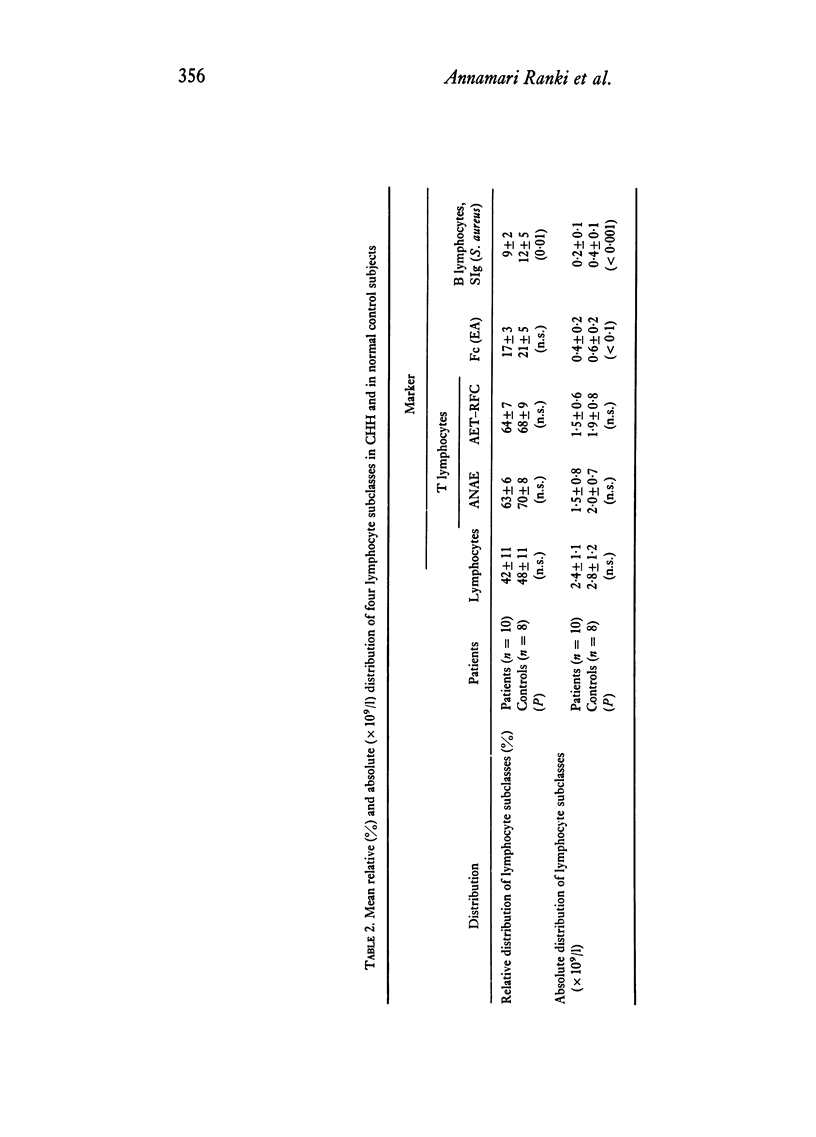
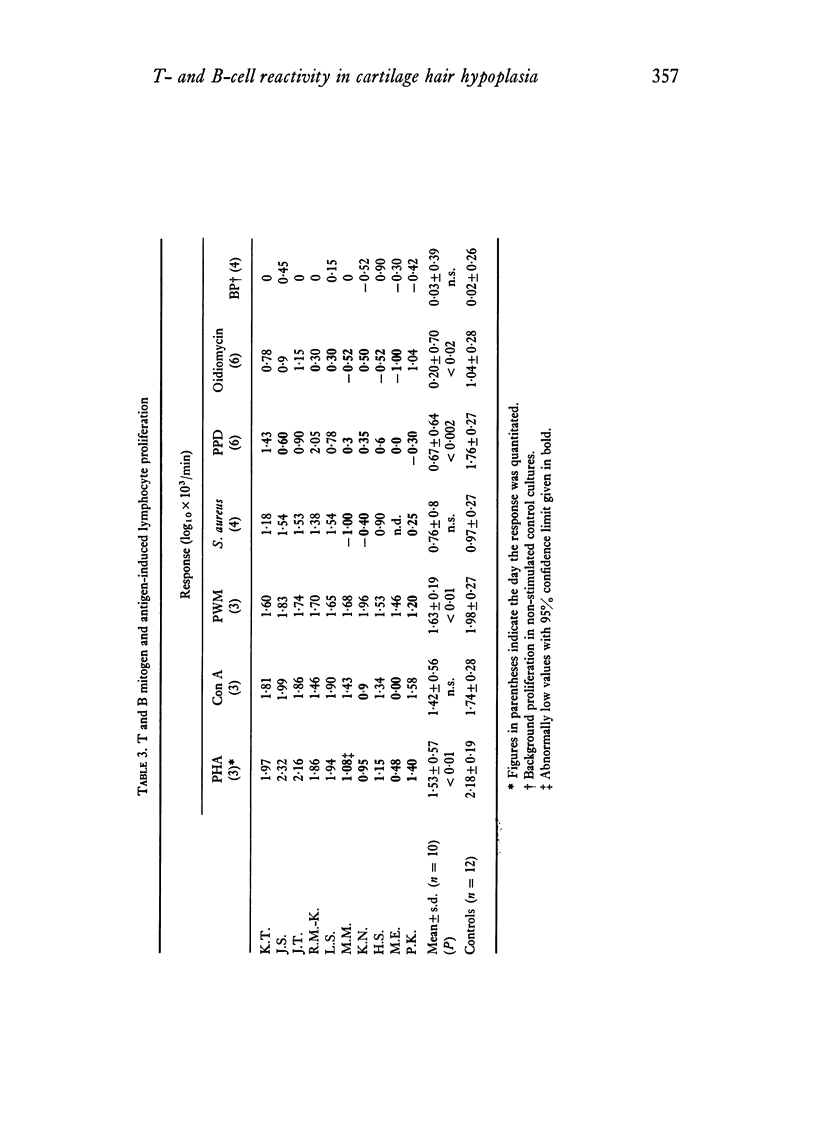
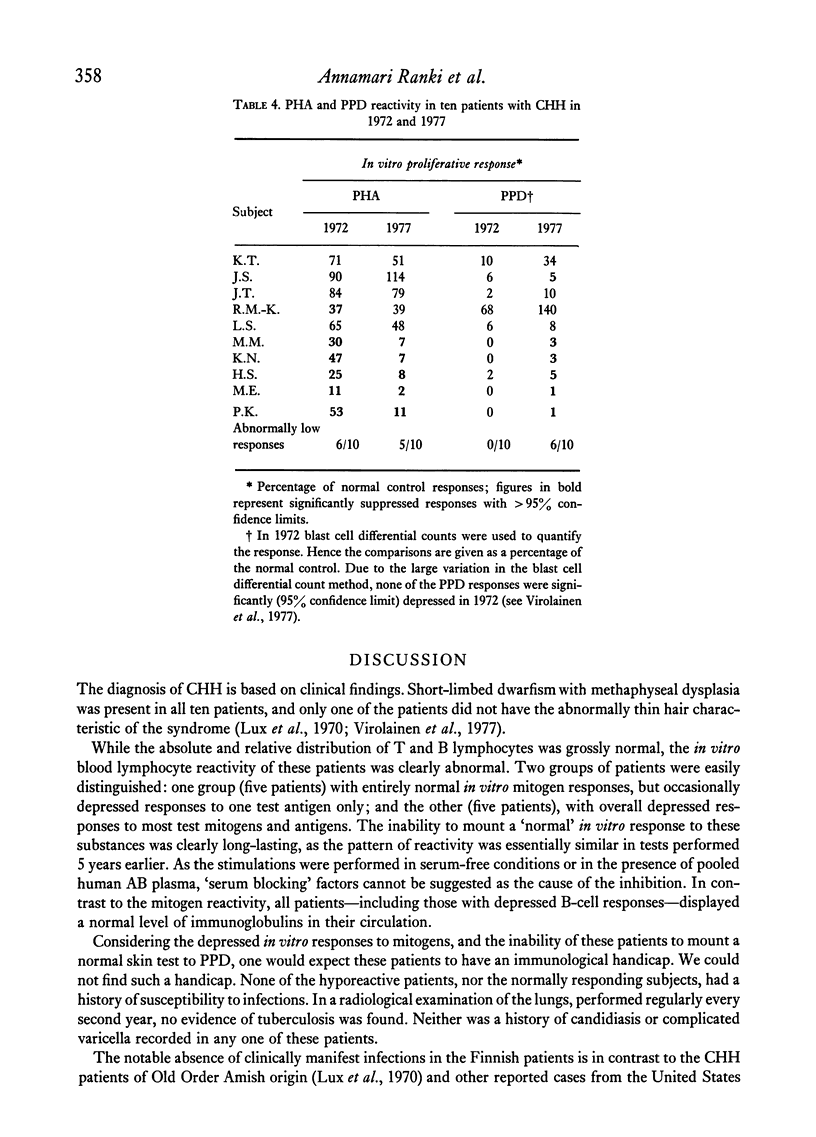
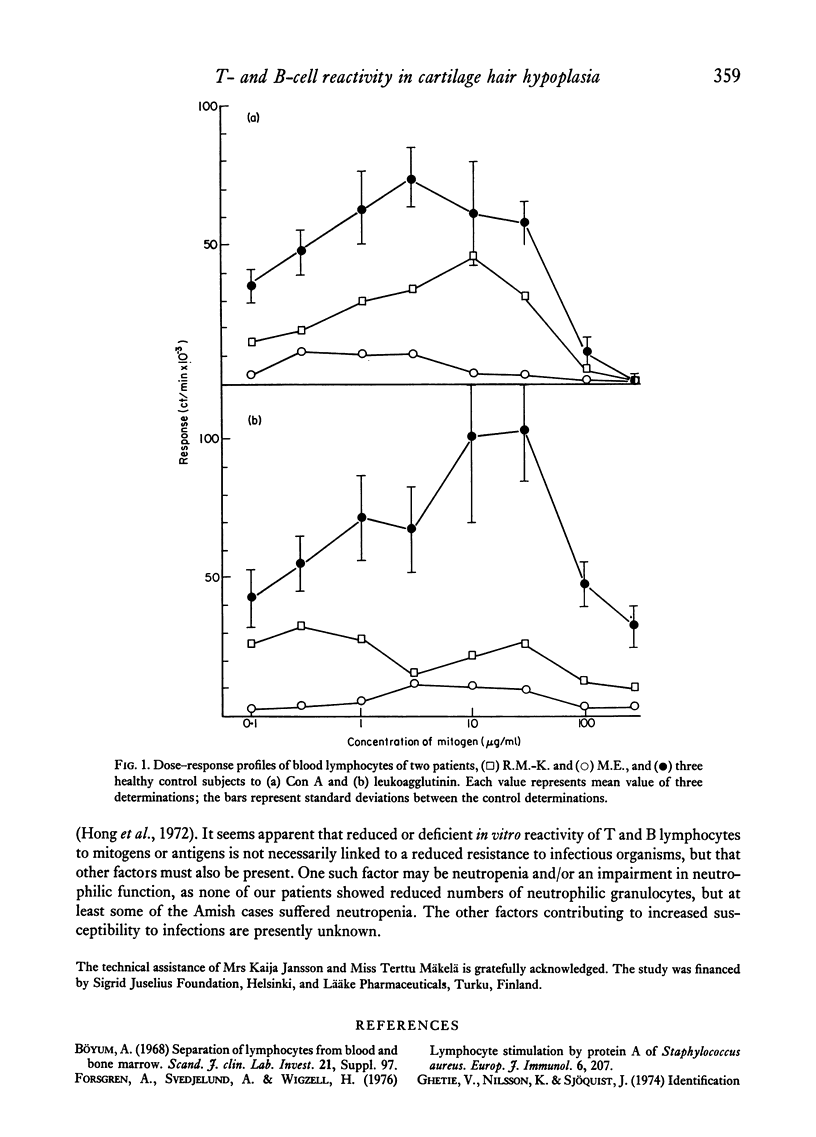
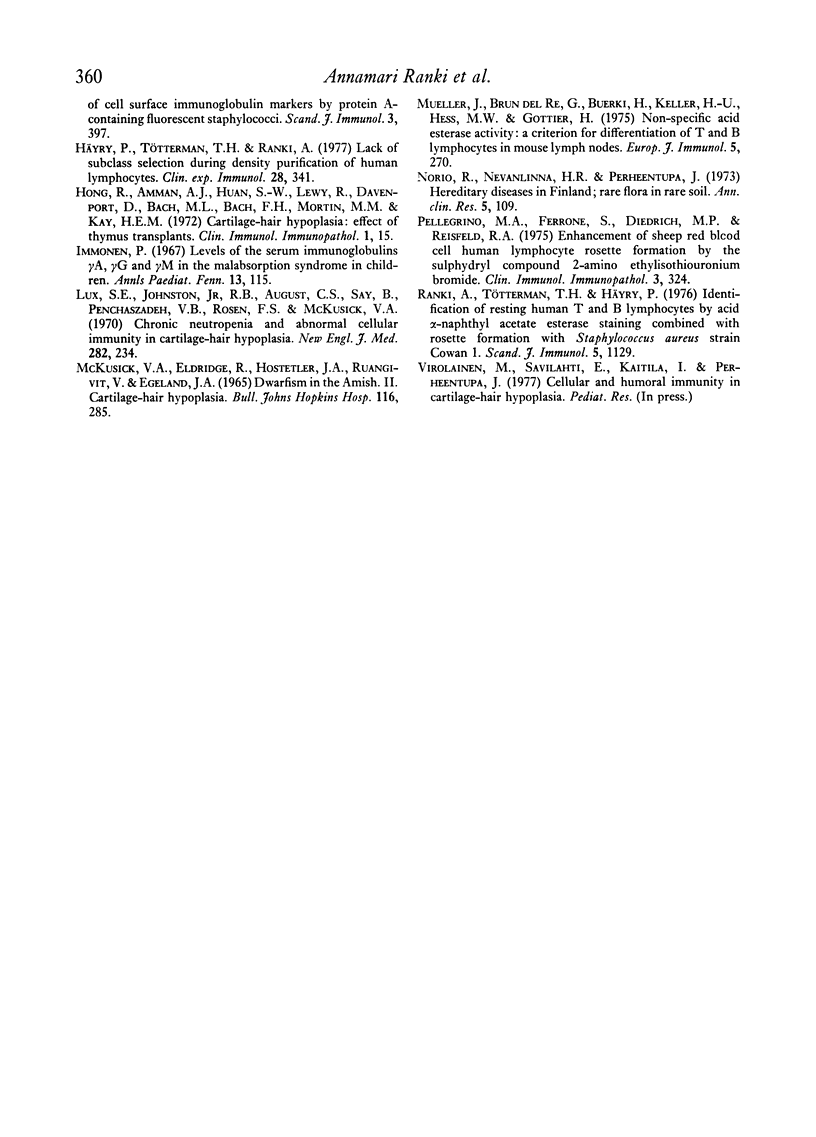
Selected References
These references are in PubMed. This may not be the complete list of references from this article.
- Forsgren A., Svedjelund A., Wigzell H. Lymphocyte stimulation by protein A of Staphylococcus aureus. Eur J Immunol. 1976 Mar;6(3):207–213. doi: 10.1002/eji.1830060312. [DOI] [PubMed] [Google Scholar]
- Ghetie V., Nilsson K., Sjöquist J. Identification of cell surface immunoglobulin markers by protein A-containing fluorescent staphylococci. Scand J Immunol. 1974;3(4):397–403. doi: 10.1111/j.1365-3083.1974.tb01272.x. [DOI] [PubMed] [Google Scholar]
- Häyry P., Tötterman T. H., Ranki A. Lack of subclass selection during density purification of human lymphocytes. Clin Exp Immunol. 1977 May;28(2):341–346. [PMC free article] [PubMed] [Google Scholar]
- Immonen P. Levels of the serum immunoglobulins gamma-A, gamma-G and gamma-M in the malabsorption syndrome in children. Ann Paediatr Fenn. 1967;13(4):115–153. [PubMed] [Google Scholar]
- MCKUSICK V. A., ELDRIDGE R., HOSTETLER J. A., RUANGWIT U., EGELAND J. A. DWARFISM IN THE AMISH. II. CARTILAGE-HAIR HYPOPLASIA. Bull Johns Hopkins Hosp. 1965 May;116:285–326. [PubMed] [Google Scholar]
- Norio R., Nevanlinna H. R., Perheentupa J. Hereditary diseases in Finland; rare flora in rare soul. Ann Clin Res. 1973 Jun;5(3):109–141. [PubMed] [Google Scholar]
- Pellegrino M. A., Ferrone S., Dierich M. P., Reisfeld R. A. Enhancement of sheep red blood cell human lymphocyte rosette formation by the sulfhydryl compound 2-amino ethylisothiouronium bromide. Clin Immunol Immunopathol. 1975 Jan;3(3):324–333. doi: 10.1016/0090-1229(75)90019-7. [DOI] [PubMed] [Google Scholar]
- Ranki A., Tötterman T. H., Häyry P. Identification of resting human T and B lymphocytes by acid alpha-naphthyl acetate esterase staining combined with rosette formation with Staphylococcus aureus strain Cowan 1. Scand J Immunol. 1976;5(10):1129–1138. doi: 10.1111/j.1365-3083.1976.tb00254.x. [DOI] [PubMed] [Google Scholar]


